Climate change and extreme weather
Greenhouse gas emissions are altering the basic physical and chemical environment for life on Earth – carbon dioxide concentrations, temperatures, rainfall and acidity – leading to heatwaves, more extreme droughts and floods, more-intense cyclones, ocean acidification and sea-level rises. Already, 8% of nationally listed threatened species are imperilled by climate change and extreme weather (to a high or medium degree). The rapid pace of change is likely to increasingly overwhelm the capacity of species to adapt.
One of the most evident impacts of climate change has been increasingly frequent coral bleaching events, leading to the death of 50% of the Great Barrier Reef’s coral since the mid-1990s.
But many of the most harmful impacts of climate change on biodiversity will be indirect – for example, due to more-intense fire regime, benefits to invasive species and a greater susceptibility of native species to disease.
Apart from the obvious change needed – drastic global reduction of greenhouse gas emissions – priorities to abate climate change threats include:
- fostering resilience to climate change by reducing other threats and improving ecosystem health
- strengthening mitigation by protecting and enhancing natural carbon sinks
- developing a national climate biodiversity adaptation strategy
- identifying and strictly protecting important climate refugia.
Our work
Threats to Nature project / Invasive Species Council and Bush Heritage Australia. 2021. ‘Fire regimes that cause biodiversity decline’ as a key threatening process – comment on the listing assessment. Submission by the Invasive Species Council and Bush Heritage Australia. January 2022.












